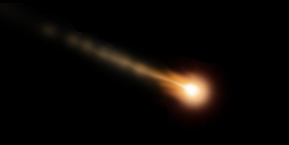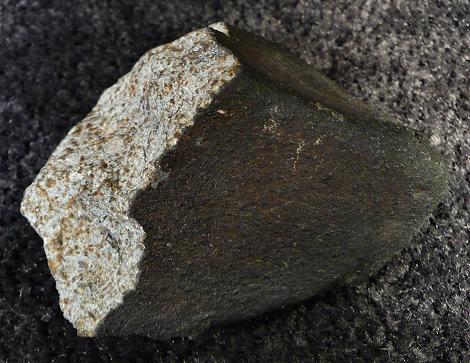
COLLECTION
| Meteorite Name: | Zag |
| Location: | Western Sahara or Morocco |
| Classification: | H3-6 Chondrite |
| Witnessed Fall: | Yes |
| Date and Time: | August 4 or 5, 1998 |
| TKW: | ~ 175 kilograms |
| Remarks: | Zag, presumably from the parent body 6 Hebe, an asteroid with an orbit resonant with that of Earth, contains salt crystals that formed within 2 million years of the birth of our solar system, and which harbor brine water inside them. These findings indicate that the dust and gas from which our solar system coalesced began to clump together much sooner than was previously thought and that the ingredients required for the origin of life may have existed at a very early period of solar system formation. It is hypothesized that the decay of the radioactive material within the original parent body provided enough heat energy such that the water ice present melted and evaporated, leaving the salt crystals, composed of halite, behind. Within these halite crystals are very small inclusions that contain water. The extraterrestrial origin of the water was confirmed by measuring Xenon, Iodine, and Argon isotopes contained within the halite crystals. A large amount of Xenon-129 was found. Xenon-129 forms when Iodine-129 decays. While Iodine-129 was in existence in the early solar system, it is not found on Earth today. Once the amount of Iodine-129 was determined it was a straightforward process to see how much of it had decayed into Xenon-129. Since this happens at a rather precise rate (the half life of Iodine-129 is 15.7 million years), the researchers were able to date the salt crystals as being 4.57 billion years old. This confirmed the assumption that the halite had indeed formed in space a very long time ago. Until this discovery, the oldest known materials in the solar system were believed to be chondrules, which are thought to have formed within the first 5 million years of solar system development. The findings regarding halite crystals within the Zag meteorite suggest that it may be from an even earlier time, and this discovery has provided yet an additional potential original source for water on Earth. This specimen is now in the Sean Murray Collection of Meteorites and Tektites. |
 | |
| 220 gram broken individual | |
